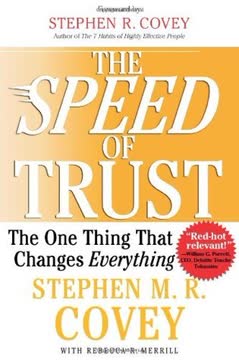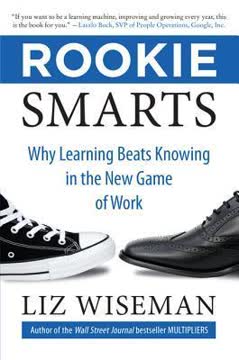Key Takeaways
1. Multipliers amplify intelligence, while Diminishers drain it
Multipliers get twice the capability from people as do Diminishers.
Multipliers vs. Diminishers. Multipliers are leaders who use their intelligence to amplify the smarts and capabilities of people around them, making everyone smarter and more capable. In contrast, Diminishers are the idea killers and energy destroyers who drain intelligence and capability from their teams.
The Multiplier Effect. Multipliers get more than twice the capability from their people compared to Diminishers. They create an environment where:
- Ideas are generated with ease
- People learn rapidly and adapt to new environments
- Complex problems get solved
- Difficult tasks get accomplished
Core assumptions. The difference stems from their fundamental assumptions:
- Multipliers believe: "People are smart and will figure things out"
- Diminishers believe: "People won't figure this out without me"
These assumptions shape their leadership practices and ultimately determine how much of their team's intelligence and capability they can access and utilize.
2. The Talent Magnet: Attract and optimize talent
Talent Magnets create a cycle of attraction that accelerates performance and grows genius.
Attract and develop talent. Talent Magnets have a rich view of intelligence and talent. They:
- Look for talent everywhere, appreciating all types of genius
- Find people's native genius - what they do easily and freely
- Utilize people at their fullest, connecting them with opportunities
- Remove blockers, including prima donnas and themselves when necessary
Cycle of attraction. This approach creates a virtuous cycle:
- A players are attracted to work with Talent Magnets
- Their genius is discovered and fully utilized
- They become smarter and more capable (A players become A+ players)
- Their value increases, attracting more opportunities
- The organization gains a reputation as "the place to grow"
- More A players are attracted, replacing those who grow out
In contrast, Empire Builders (Diminishers) hoard resources, underutilize talent, and create a cycle of decline where talent stagnates and high performers leave.
3. The Liberator: Create intense environments that require best thinking
Liberators create an intense environment that requires people's best thinking and work.
Create space and demand rigor. Liberators maintain a duality of comfort and pressure:
- Create safety: Remove fear, shift the ratio of listening to talking, operate consistently
- Demand rigor: Ask challenging questions, pursue all sides of an issue, expect evidence
Generate rapid learning cycles. Liberators:
- Admit and share their own mistakes
- Insist on learning from mistakes
- Create an environment where it's safe to fail, but not to make the same mistake twice
The result: An intense (not tense) environment where:
- People offer their best and boldest thinking
- Everyone gives their full effort
- Team members take risks and learn quickly from mistakes
In contrast, Tyrants (Diminishers) create tense environments that suppress thinking and capability, leading to safe ideas and cautious work.
4. The Challenger: Extend challenges beyond what people know
Multipliers know that people grow through challenge.
Seed the opportunity. Challengers:
- Show the need, allowing others to discover opportunities
- Challenge assumptions that entrench old thinking
- Reframe problems to show opportunities
- Create a starting point, but not a complete solution
Lay down a challenge. They:
- Extend concrete challenges that create a huge stretch
- Ask hard questions that can't be answered with current knowledge
- Let others fill in the blanks, shifting the burden of thinking
Generate belief. Challengers:
- Demonstrate why it can be done
- Lay out a path
- Co-create the plan
- Orchestrate early wins
This approach builds the intellectual muscle, emotional energy, and collective intent to take on significant challenges. In contrast, Know-It-Alls (Diminishers) showcase their knowledge, tell people what to do, and limit what the organization can achieve to what they themselves know how to do.
5. The Debate Maker: Drive sound decisions through rigorous debate
Freedom is hammered out on the anvil of discussion, dissent, and debate.
Frame the issue. Debate Makers:
- Define the question and form the right team
- Assemble critical data
- Clarify what needs to be addressed, why it's important, and how decisions will be made
Spark the debate. They create safety for best thinking while demanding rigor:
- Encourage all points of view and focus on facts
- Ask hard questions and challenge assumptions
- Look for evidence and pursue all sides of the issue
Drive a sound decision. Debate Makers:
- Reclarify the decision-making process
- Make the decision or explicitly delegate it
- Communicate the decision and rationale
This approach leads to sound decisions that people understand and can execute efficiently. In contrast, Decision Makers (Diminishers) engage only a small inner circle, leaving the broader organization in the dark and debating the soundness of decisions instead of executing them.
6. The Investor: Give ownership and invest in success
The reward for winning a pinball game is to get a chance to play the next one.
Define ownership. Investors:
- Name the lead and give them majority ownership (e.g., "51% of the vote")
- Give ownership for the end goal, not just a piece
- Stretch the role beyond current capabilities
Invest resources. They:
- Teach and coach, helping people learn what they need to know
- Provide backup, offering support without taking over
Hold people accountable. Investors:
- Give back ownership when they step in to help
- Expect complete work ("Don't give me an A-W-K without an F-I-X")
- Respect natural consequences
- Make the scoreboard visible
This approach creates independence and allows organizations to sustain performance without the leader's direct involvement. In contrast, Micromanagers (Diminishers) maintain ownership, jump in and out, and create dependency.
7. Becoming a Multiplier: Adopt the right mindset and practices
Give yourself permission to be better than your boss.
Work the extremes. Focus on:
- Neutralizing your biggest weakness
- Topping off your biggest strength
Start with assumptions. Adopt Multiplier mindsets:
- "If I can find someone's genius, I can put them to work"
- "People's best thinking must be given, not taken"
- "People get smarter by being challenged"
- "With enough minds, we can figure it out"
- "People are smart and will figure things out"
Take the 30-Day Multiplier Challenge. Pick one practice within one discipline and work it for 30 days. For example:
- Talent Magnet: Label people's genius in front of the group
- Liberator: Only speak in questions for an hour
- Challenger: Take your team on a "bus trip" to see needs firsthand
- Debate Maker: Frame a high-stakes decision for rigorous debate
- Investor: Give someone 51% ownership of a project
Sustain momentum:
- Build it layer by layer, like Boléro
- Stay with it for a year, holding a single question
- Build a community for accountability and idea-sharing
By consistently applying these principles, leaders can shift from being a genius to a genius maker, unlocking the full intelligence and capability of their organizations.
Last updated:
FAQ
What's Multipliers: How the Best Leaders Make Everyone Smarter about?
- Leadership Styles: The book explores two types of leaders: Multipliers, who enhance team intelligence, and Diminishers, who limit it.
- Multiplier Effect: It introduces the "Multiplier Effect," where leaders can significantly boost team performance by fostering growth and challenge.
- Practical Framework: Provides a framework for becoming a Multiplier through specific practices and mindsets that encourage optimal team performance.
Why should I read Multipliers by Liz Wiseman?
- Modern Leadership Relevance: Offers insights crucial for maximizing talent in resource-constrained environments, applicable across various sectors.
- Transformative Insights: Challenges traditional leadership by emphasizing the development of others, leading to more innovative teams.
- Actionable Strategies: Provides practical strategies to enhance leadership effectiveness, making it a valuable resource for leaders.
What are the key takeaways of Multipliers?
- Two Leadership Types: Distinguishes between Multipliers, who enhance team intelligence, and Diminishers, who limit it.
- Five Disciplines: Multipliers attract talent, create intense environments, extend challenges, debate decisions, and instill ownership.
- Mindset Shift: Encourages leaders to become "genius makers" by recognizing and cultivating others' intelligence.
What is the Multiplier Effect in Multipliers?
- Definition: Refers to leaders who empower teams to achieve significantly greater results.
- Quantitative Impact: Multipliers can extract nearly twice the capability from their teams compared to Diminishers.
- Cultural Shift: Creates a culture of collaboration and high performance, where team members feel valued.
What are the five disciplines of Multipliers according to Liz Wiseman?
- Attract and Optimize Talent: Act as Talent Magnets, drawing in skilled individuals and deploying them effectively.
- Create Intensity: Foster a supportive yet demanding environment, encouraging team members to push their limits.
- Extend Challenges: Set high expectations and challenges that prompt growth and innovation.
- Debate Decisions: Engage teams in rigorous discussions to ensure well-thought-out decisions.
- Instill Ownership: Empower teams by giving them ownership and holding them accountable for results.
How do Multipliers create a safe environment for their teams?
- Encouraging Open Communication: Foster a culture where team members feel safe to express ideas without fear.
- Admitting Mistakes: Model vulnerability by sharing mistakes, encouraging risk-taking and learning.
- Providing Constructive Feedback: Offer feedback focused on growth, helping team members improve without feeling belittled.
What is the difference between a Tyrant and a Liberator in Multipliers?
- Tyrant's Approach: Creates a tense environment that suppresses thinking and creativity, leading to fear and disengagement.
- Liberator's Approach: Demands the best work while providing space and support for individuals to thrive.
- Impact on Performance: Tyrants stifle innovation, while Liberators unlock potential and foster high performance.
How can I become a Multiplier according to Multipliers?
- Shift Your Mindset: Recognize the value of others' intelligence and commit to developing it.
- Practice the Five Disciplines: Implement the disciplines of attracting talent, creating intensity, extending challenges, debating decisions, and instilling ownership.
- Seek Feedback and Reflect: Regularly solicit feedback and be open to adjustments to foster an empowering environment.
What are some examples of Multipliers in action from Multipliers?
- Shai Agassi at Better Place: Challenged his team to innovate in the electric vehicle space, leading to groundbreaking advancements.
- Ray Lane at Oracle: Engaged executives in co-creating strategy, fostering ownership and driving growth.
- Larry Gelwix, Highland Rugby Coach: Demands excellence while creating a supportive environment for players to excel.
What are the characteristics of a Diminisher in Multipliers?
- Control-Oriented: Micromanages and maintains tight control, stifling creativity and initiative.
- Limited Engagement: Engages only a small inner circle, underutilizing the broader team's intelligence.
- Negative Impact: Leads to disengagement and frustration, resulting in high turnover and lack of innovation.
What are the practices of a Debate Maker in Multipliers?
- Framing the Issue: Clearly define the question or issue to set the stage for productive discussions.
- Sparking Debate: Encourage rigorous debate by asking challenging questions and inviting diverse perspectives.
- Driving Sound Decisions: Ensure decisions are made based on collective input and sound reasoning.
How can I leverage the intelligence of my team according to Multipliers?
- Identify Individual Strengths: Recognize and label unique talents, aligning roles with strengths.
- Encourage Collaboration: Foster a collaborative environment for sharing ideas and working on challenges.
- Empower Decision-Making: Give ownership of projects, boosting confidence and enhancing engagement.
Review Summary
Multipliers receives mixed reviews, with an overall positive rating. Many readers find its concepts on leadership insightful and practical, praising its focus on empowering others and maximizing team potential. However, some criticize the book for being overly long and repetitive, arguing that its core ideas could be conveyed more concisely. Readers appreciate the contrasting leadership styles of Multipliers and Diminishers, but opinions vary on the effectiveness of the numerous anecdotes and examples provided. Despite criticism, many still recommend it as a valuable resource for leaders seeking to improve their management approach.
Similar Books










Download PDF
Download EPUB
.epub digital book format is ideal for reading ebooks on phones, tablets, and e-readers.








